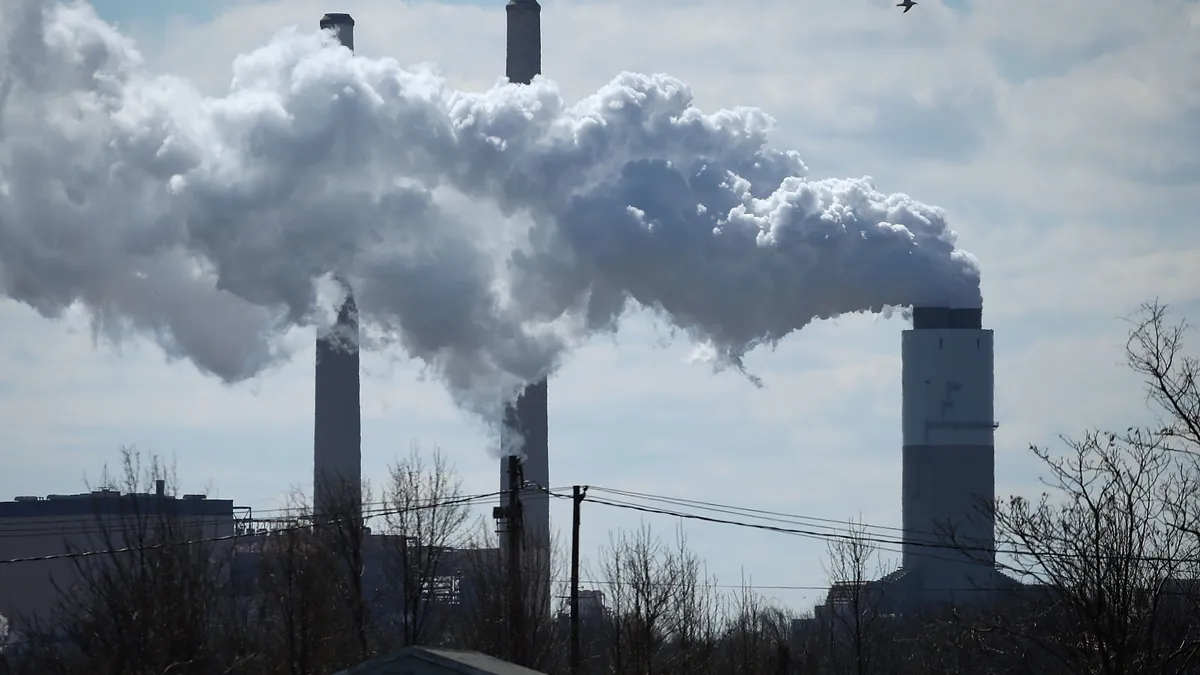Dive Brief:
- The Environmental Protection Agency issued a notice in August to Archer-Daniels-Midland, an agricultural supply chain manager and processor, alleging it violated injection and monitoring processes related to one of its carbon capture and storage wells in Decatur, Illinois, according to the notice obtained and reviewed by CFO Dive sister publication ESG Dive. The existence of the notice, not currently public, was first reported by Politico’s E&E News Friday.
- The agency alleged the violations occurred between January 2022 and July 2024 for operating in a manner that allowed movement of injection fluids in “any unauthorized zones;” a failure to monitor and a failure to follow the permit’s emergency response and remediation plan.
- The violations are related to a monitoring well — one of two designed to keep an eye on whether sequestered carbon is flowing to the right place — that corroded at a depth of around 5,000 feet and has since been plugged and is no longer in use, according to a company statement sent to ESG Dive Monday. “At no time was there any impact to the surface or groundwater sources or any threat to public health,” ADM said.
Dive Insight:
The news comes as ADM is also facing scrutiny related to an accounting scandal that surfaced earlier this year. Monish Patolawala, ADM’s new CFO, recently vowed to focus on the root cause of the company’s accounting problems.
ADM was the first U.S. company to operate an EPA-permitted Class VI well, with its first well opening in 2011, according to the company’s EPA response. ADM received a Class VI permit in 2017 to operate its second well to inject and store captured carbon dioxide in geologic formations at depths of between 5,550 and 7,000 feet in Illinois. The corroded well was monitoring the second injection project.
The agribusiness said it reported developments about the monitoring well’s corrosion and failures as it learned about them in semi-annual reports to the agency, according to the company’s Aug. 22 response to the agency, obtained by ESG Dive Monday. The company also met with the agency in February to discuss a proposal to restore the well to operating conditions, according to the response. ADM’s response also maintains that there has been no effects to groundwater, surface water or public health.
“We take very seriously our responsibility to operate this technology safely, capture our learnings along the way, and make adjustments as needed,” the company said in a statement. “Our CCS operation has extensive monitoring in place to ensure that we promptly detect, address, and learn from any developments.”
ADM said in its response that the company first began noticing “intermittent” malfunctions in the second monitoring well in September 2020 at a depth of a little more than 5,000 feet, with all of the well’s gauges malfunctioning by January 2022 — when the alleged violations began.
The company said after failing to restore its capabilities by October 2023, it began to pull the well’s piping and discovered corrosion that prevented the entire tubing from being recovered. At that point the company plugged the well and relied on the monitoring capabilities of the injection well, the operational monitoring well and the network of monitors from ADM’s inaugural Decatur well, per ADM’s response.
This March — following its meeting with the EPA to discuss restoring the monitoring well — ADM found injection fluid at around 5,000 feet through routine testing and monitoring and concluded it was related to the corrosion in the previously plugged well, according to the response.
The EPA said in the notice it was looking to enter an administrative order to settle the violation, and ADM said in its response to the agency that it looks forward to meeting to discuss its response and its compliance efforts.
“ADM continues to be a pioneer in the industry and has successfully and safely operated CCS wells in Decatur for more than a decade,” ADM said in its press statement. “We continue to be confident in the safety, security and effectiveness of [carbon capture and storage] as a greenhouse gas mitigation technology.”













